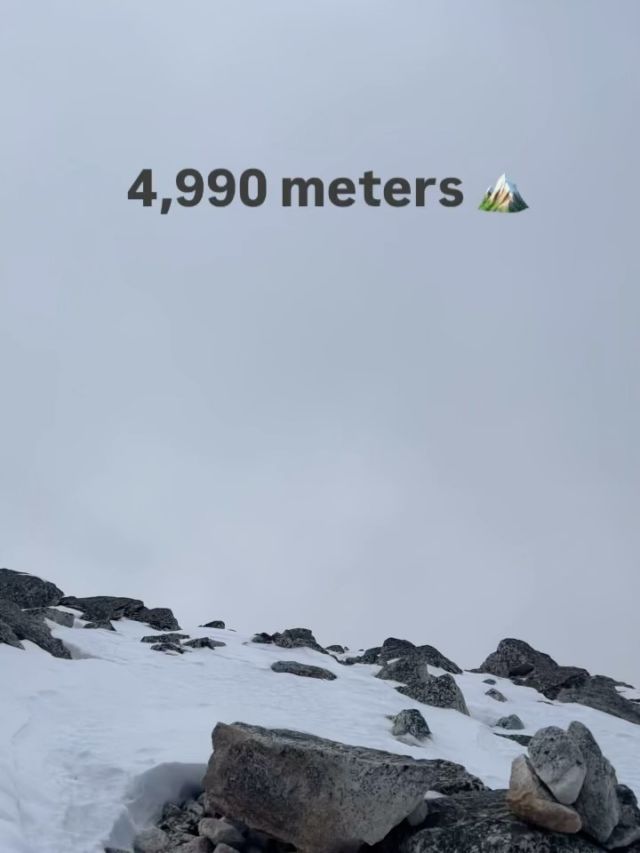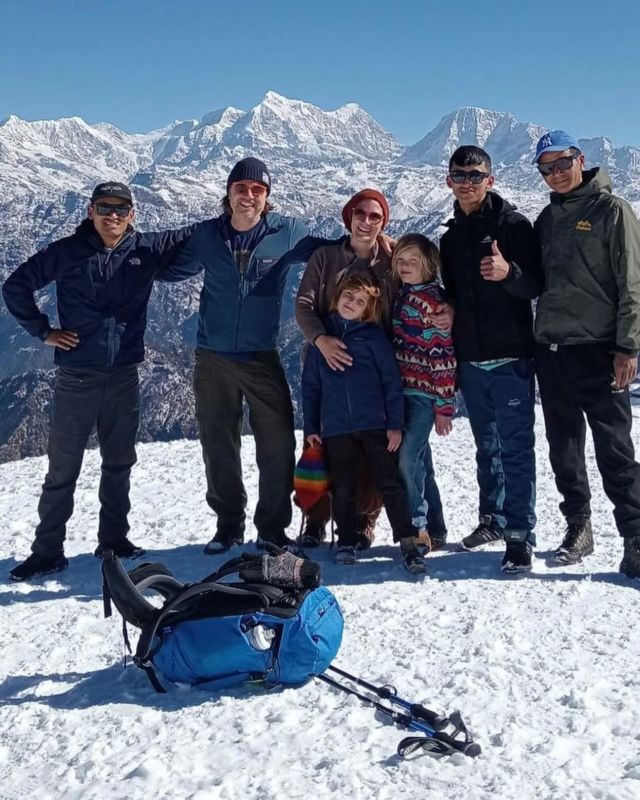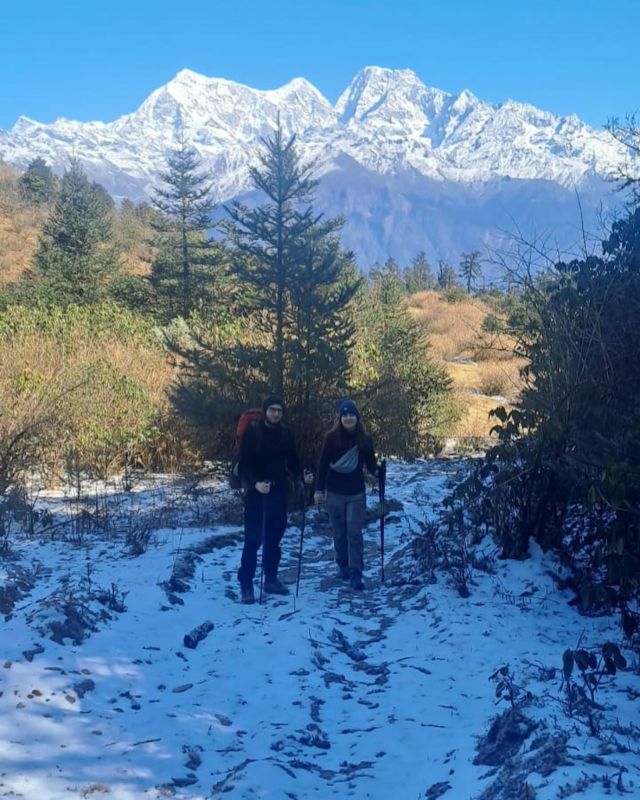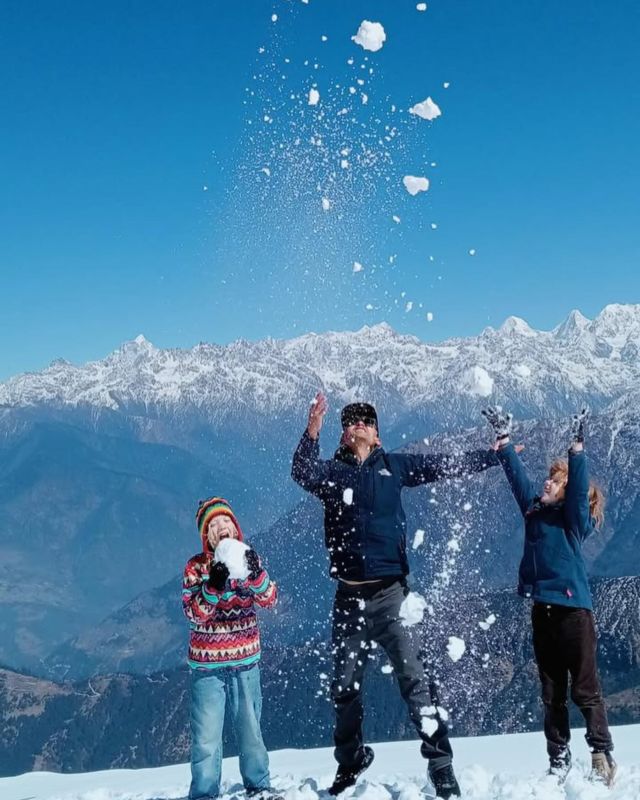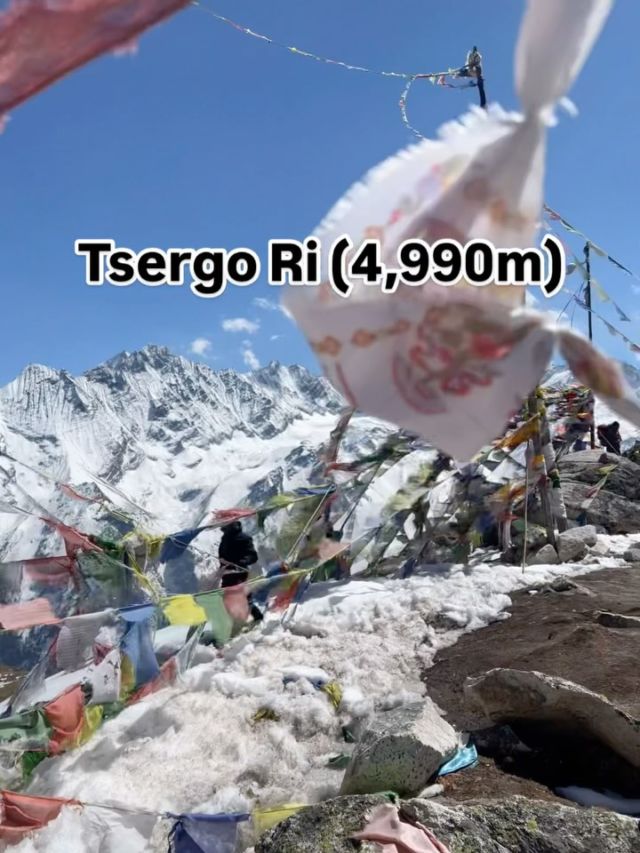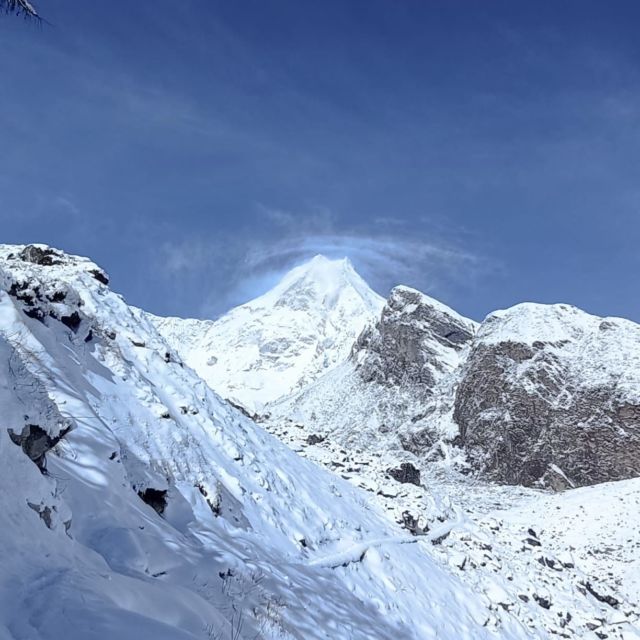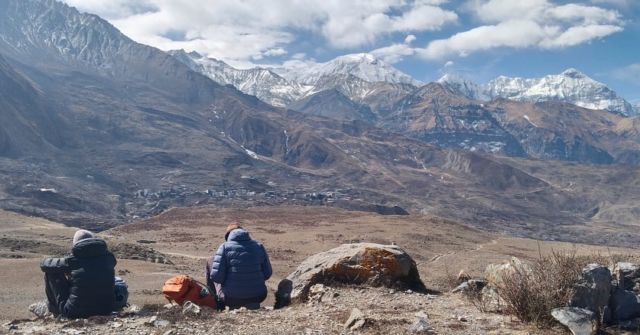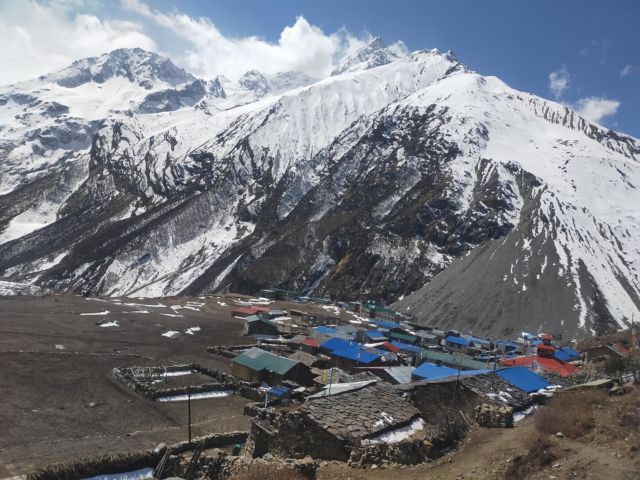Journey to Shangri-La
This 9 day tour allows you to explore Paro and Thimphu in depth and gets you out into rural Bhutan to visit the ancient capital of Punakha; Phobjikha Valley, a famous shelter of the rare Black Necked Cranes; and to Bumthang in Central Bhutan.
With so much to see and experience in Bhutan, how does one choose how long to stay and what to see? We have designed this trip to give you an extra-ordinary experience of life in Bhutan, from the cities and towns, to rural life, nature and the stunning landscape and, of course, the monastic life of this Buddhist Kingdom where Gross National Happiness is a higher priority than Gross National Product.
- Starts In: Paro
- Duration: 9 Days
- Difficulty Grade: Easy
Itinerary
Day 01: Welcome to Bhutan
The spectacular flight into Paro is a great introduction to beautiful Bhutan – you may have breathtaking views of Mount Everest, KanchanJunga and many other Himalayan peaks including the sacred Jhomolhari and Mt Jichu Drake in Bhutan. Your guide will meet you on arrival at Paro and take you to your hotel to settle in and have some tea.
After tea, we will drive out to the ruins of the Drukgyal Dzong (fort). This dzong, now in ruins, was built by Shabdrung Ngawang Namgyal to commemorate the victory over the Tibetan invaders in 1644. The Shabdrung is credited with being the unifier of Bhutan and he also sought to create a distinctly Bhutanese cultural identity, separate from the Tibetan culture from which it was derived. The dzong’s name actually means “victorious Druk” and it had been used as an administrative centre until 1951 when a fire caused by butter lamp destroyed it. We can explore the ramparts and on a clear day we can see the unforgettable view of Mt. Jhomolhari (7,314m).
On the way back to Paro we will visit Kichu Lhakhang, a monastery that was built to hold down the left foot of an ogress whose body covers Bhutan and most of Eastern Tibet. It is one of the 108 monasteries that were miraculously constructed in one night by Tibetan King Songten Gampo in the 7th century. This is one of two of these monasteries that lies within Bhutan, the rest being found in neighbouring countries.
After this great introduction to the history and mysticism of Bhutan, we return to our hotel to enjoy our dinner and a well earned rest.
Accommodation: Best Available
Meals included:
Lunch, Dinner
Day 02: Paro, Excursion to Taktsang Monastery, Thimphu
This morning we head out of town to visit Taktsang, the Tiger’s Nest Monastery, perched high on a cliff and one of the most important places in Buddhism. While flying on the back of a tiger, Guru Rinpoche identified Taktsang as a sacred place and meditated in a cave for three months. Guru Rinpoche is also known as Padmasambhava, the tantric mystic who brought Buddhism to Bhutan in 747 AD. Today it’s perhaps the best-known monastery in the world, because of its stunning location and it is the unofficial symbol of Bhutan. The monastery was built around the meditation cave in 1684 by the Penlop of Paro and although a fire destroyed most of the original buildings in 1998, these have since been painstakingly restored to their former glory.
The hike to Taktshang is a steep walk and takes 2 – 2½ hours to reach. The trail climbs through beautiful pine forest, many of the trees festooned with Spanish moss, and an occasional grove of fluttering prayer flags. We stop for a rest and light refreshments at the Taktsang Jakhang (cafeteria) and then walk a short distance until we gain an incredible view of the Monastery, perched precariously on the edge of the sheer 800m cliff!
After lunch we visit the Ta Dzong, an ancient watchtower that, since 1967, has been the National Museum of Bhutan. A specific route must be followed in the building which ensures a clockwise progression around important images. Exhibits include an impressive collection of thankas; a description of early history that illustrates how magic and science are inseparable in Bhutan; and not to be missed, Bhutan’s eclectic stamp collection, including some stamps that you can listen to on a record player! Below the Ta Dzong is the Rimpung Dzong (Paro Dzong) built in 1646 by Shabdrung Ngawang Namgyal. The Dzong presently houses administrative offices and protected within its walls is a collection of sacred masks and costumes, some dating back several centuries.
This evening we drive 60km to Thimphu, the capital of Bhutan, ready for more exploring tomorrow!
Accommodation: Best Available
Meals included:
Breakfast, Lunch, Dinner
Day 03: Thimphu Sightseeing
After breakfast, we will indulge in a great day’s sightseeing in Thimphu! First, we will visit the National Memorial Chorten built-in memory of the third King of Bhutan, His Majesty King Jigme Dorji Wangchuck. The deities depicted inside are the Nyingmapa tradition of Buddhism and teachings of Vajrayana (or tantric form of) Buddhism and provide a rare insight into Buddhist Philosophy. We then visit the Dupthop Lhakhang, one of the few surviving nunneries in Bhutan.
We then visit the National Library, which holds a vast collection of ancient Buddhist manuscripts and some of the oldest records of Bhutanese history and religion. We follow this with a visit to the Painting School, famous for carving and freehand art. Here you can see not only paintings, sculpture, clay work and metalwork, but also students and artists at work.
After lunch we drive to the Traditional Medicine Institute, established in 1988, traditional herbal medicines are prepared here in accordance with ancient practices and distributed nationwide. There is a daily clinic where doctors diagnose patients and prescribe appropriate traditional medicine or treatments.
We then visit the locality of Lungtenzampa to observe the Royal silver smiths and Bhutanese paper factory at work. Other highlights of our Thimphu exploring include a visit to the Tashichho Dzong (or the ‘Fortress of the Glorious Religion), built in 1641 by Shabdrung Ngawang Namgyal and reconstructed in 1961. It is presently the seat of the national government and the Central Monastic Body, including the summer residence of the Je Khenpo (Chief Abbot and spiritual leader of Bhutan).
Lastly, we visit the Handicrafts Emporium to see the exquisite artistry of Bhutan’s traditional crafts and textiles before taking some free time to indulge in shopping for souvenirs in the shops of Thimphu.
Overnight in our Hotel.
Accommodation: Best Available
Meals included:
Breakfast, Lunch, Dinner
Day 04: Thimphu - Punakha
After breakfast this morning, we have a scenic drive to Punakha, the ancient capital of Bhutan. On the way we cross the Dochu La (pass), where we will have a superb view of the Himalayan Range if the weather is clear. Driving through swarms of prayer flags fluttering in the wind we cross the pass and descend into the sub-tropical Punakha valley.
On the way we will visit the Chimi Lhakhang (temple), also known as “the Temple of Fertility”. This temple was built by Lama Drukpa Kuenley (also known as the Divine Madman for his odd ways) in the 15th century who subdued a demoness with a magical thunderbolt and made her the protective deity of the temple.
We will have lunch in Punakha. After lunch we visit Punakha Dzong (fort), built in 1637 by Shabdrung Ngawang Namgyal and situated at the holy confluence of the Pho Chu (Male River) and Mo Chu (Female River). It has been destroyed by four fires, an earthquake in 1897 and has frequently been devastated by flood water coming from the great northern glaciers! However, the Dzong has now been fully restored to its original splendour.
It has long been an important site, with the temple of saint Ngagi Rinchen built here in 1328. The temple, now called the Dzong Chu (small dzong) can still be seen opposite the main dzong and houses a sacred statue of the Buddha, which plays an important role in the creation of the Punakha dzong. Its construction was foretold by Guru Rinpoche, who predicted Namgyal’s coming. It is said that the Shabdrung commanded the architect to sleep in front of the ancient Buddha statue. In his dreams, the Shabdrung showed him the palace of Guru Rinpoche and from this vision, the design for the new dzong was conceived. The mummified body of the Shabdrung is preserved here and Bhutan’s first king was crowned here. For many years it served as the seat of the Government and, even after moving to Thimphu, the government used it as their winter seat, due to the warmer climate. It is still the winter residence of Je-Khenpo (the spiritual leader of Bhutan).
In the evening, hike to the Khamsung Yulley Namgyal Choling Monastery. This is a new monastery built by and for the Royal Family, it is about a 45-minute walk from Punakha. After this excursion, we return to our hotel for dinner and well-earned rest.
Accommodation: Best Available
Meals included:
Breakfast, Lunch, Dinner
Day 05: Punakha - Gangtey - Trongsa
Today we have an early start, driving Trongsa via Gangtey.
After breakfast we have a scenic drive to Gangtey, with the stunning Wangdiphodrang Dzong as a stop on the way. This dzong was built in 1638 and legend relates that, as the people were searching for the site of the dzong, four ravens were seen flying away in four directions. This was considered auspicious sign, representing the spread of Buddhism to the four points of the compass. The dzong is located at the last town before entering central Bhutan and it played a vital role in unifying the districts of Bhutan.
Moving on from Wangdiphodrang we cross a mountain pass to descend into the Phobjikha Valley. As we have been driving through beautiful rhododendron forest on most of our travels, the contrast of descending into the unique open marshlands of the valley is striking.
While in Gangtey we will visit the Gangtey Gompa founded in the 16th century by Gyaltse Pema Thinley, the grandson of the great Bhutanese saint Pemalingpa. At the end of the 17th century it was enlarged by the second reincarnation, Abbot Tenzin Legpai Dhendup. It is currently headed by the Abbot Kunzang Pema Namgyal, who is the ninth re-incarnation. It is a Nyingmapa monastery and is affiliated to other Nyingmapa monasteries including Tamshing in Bumthang and is well known for its lovely paintings and statues.
Before enjoying our packed lunch, we will explore the Phobjikha Valley, famous for sheltering the rare Black Necked Cranes during winter. The cranes, usually in a flock of up to 200 birds, migrate from northern Tibet to winter here. Their numbers have been gradually increasing over the years and it is important to respect this important conservation site and not to disturb these beautiful birds.
After our packed lunch we will continue on a spectacular road to Trongsa and visit the most impressive dzong in Bhutan! The first temple in Trongsa (the Chorten Lakhang) was built in 1543 by the Drukpa Kagyu lama, Ngagi Wangchuk, who was the great-grandfather of Shabdrung Ngawang Namgyel, the person who unified Bhutan.
Trongsa Dzong, built in 1644, is the ancestral home of the present Royal Family and first two hereditary kings ruled Bhutan from this Dzong. Traditionally, the King of Bhutan first becomes the Penlop (governor) of Trongsa before being named Crown Prince and eventually King. Built on a mountain spur high above the gorges of the Mangde Chhu (river), the dzong controlled east-west trade for centuries. The only road connecting eastern and western Bhutan passed through the courtyard of the dzong and at the command of the Penlop the massive doors could be shut, dividing the country in two.
We then visit the Ta Dzong, an ancient watch tower built even higher up the mountainside to protect the dzong from enemies. It has unusual architecture, with two aisles protruding from the main building, something not found elsewhere. The chapel inside the Ta Dzong is said to be dedicated to the Trongsa Penlop Jigme Namgyal.
Over night in our Hotel.
Accommodation: Best Available
Meals included:
Breakfast, Lunch, Dinner
Day 06: Bumthang Sightseeing
After breakfast we drive to Bumthang, firstly on a dramatic road through forest and over a mountain pass before the scenery changes to the gentle spruce and fir covered slopes of the Bumthang region. This is such a spectacular area that we will spend two days exploring here.
After lunch, we visit the Jakar Dzong, which literally means “The Fort of the White Bird”. It was founded in 1549 by the drukpa lama Ngagi Wangchuk on the site where a white bird landed, indicating a good omen. It was enlarged in 1646, restored in 1683 and again in 1905 after a devastating earthquake. It now houses the Bumthang administration but unlike many other dzongs has no resident monks.
We proceed past the dzong to Lamey Goemba, a beautiful royal mansion and monastery built in 19th century. We then visit the Jambay Lhakhang, revered as one of the oldest temples in Bhutan. It is one of the 108 temples said to have been miraculously built in one night by the Tibetan king Srongsen Gampo to pin down a demoness. This temple was built to hold down her knee, while the Kichu Lakhang in Paro holds down her left foot.
The central figure in the sanctuary is the statue of Jampa (or Maitreya), the Buddha of the future, after whom the temple is named. There are also three stone steps inside believed to represent past, present and future, which are slowly sinking into the ground. It is said that when all the steps disappear the future Buddha will arrive and we will all gather in Bumthang Valley to receive his teachings. Under the temple is said to be a lake in which Guru Rimpoche hid several Terma (sacred teachings). In October one of the most spectacular festivals of Bhutan, “Jambay Lhakhang Drup” is staged here.
Over night in our Hotel.
Accommodation: Best Available
Meals included:
Breakfast, Lunch, Dinner
Day 07: Bumthang Sightseeing
Today we get to explore more of fascinating Bhumthang. After breakfast we visit the Chakhar Lhakhang, the site of the palace of the Indian King (the Sindhu Raja) who invited Guru Rimpoche to Bumthang. The original palace was made of Iron (Chakhar) and was said to have been nine storeys high. The current building was built in the 14th century, by the saint Dorji Lingpa and it is rightfully known as Dechen Phodrang.
We then visit the Kurjey Lhakhang, named after the body print of Guru Rinpochoe which is preserved in a cave inside the oldest of the three buildings that make up the temple complex. The first temple is the oldest and was built in 1652. Ugyen Wangchuck, the first monarch of Bhutan, built the second temple in 1900 when he was still Trongsa Penlop. The third building is a new Lhakhang built by the queen mother, Ashi Kesang Wangchuck, in 1990.
Our next stop is at the Tamshing Lhakhang (Temple of the good message). Established in 1501, it is the most important Nyingma goemba in the kingdom. It is believed that the structure was built by Pema Lingpa with the help of female celestial deities. The images on the inner walls are believed to be the original images painted by Pema Lingpa.
After lunch, we visit Mebar tsho (Literally means “Burning Lake”), a short distance up the road leading to Tang valley. According to the legend, Pema Lingpa is believed to have retrieved several of Guru Rinpochoe’s hidden treasure from the lake. Mebar Tsho derives its name from the fact that Pema Lingpa submerged himself into the lake holding a butter lamp and on emerging from the lake, the lamp was said to be still burning.
Textiles in Bhutan are unique in style to each region, and Bumthang is famous for woollen textiles called Yathra and Mathra – these brightly coloured wool fabrics are a specialty of the region and are becoming popular outside Bhutan as well. In the evening we visit a Mathra factory to see how the famous traditional material is made, followed by a visit to the local cheese factory.
Accommodation: Best Available
Meals included:
Breakfast, Lunch, Dinner
Day 08: Bumthang - Thimphu
Today we make our way back across the stunning landscape from central to western Bhutan. After an early breakfast, we load up and head out for Thimphu gaining an extra view of the incredible scenery and ancient dzongs we have visited on our way out here.
Accommodation: Best Available
Meals included:
Breakfast, Lunch, Dinner
Day 09: Thimphu - Paro (Departure)
We have an early morning this morning to drive to the Paro Airport for departure home!
Meals included: BreakfastIncluded In Price
- Hotel nights in the hotels specified in the itinerary; based on standard rooms on twin share, bed and breakfast plan
- Meals as per the detailed itinerary
- Transportation as per the detailed itinerary in private vehicles
- Transfers from/to the international airport on arrival and departure
- Your entrance fees to the sites listed
- Your Bhutan visa and travel permits
- Your Bhutan host
Not Included In Price
- Single room supplement
- Comprehensive travel insurance that includes trip cancellation and emergency rescue / evacuation that covers all of the activities you will undertake during your trip should this be required for any reason (we require this as the minimum insurance cover)
- Services and activities not mentioned in the detailed itinerary above (eg additional nights, optional trips and sightseeing tours)
- Any gear or equipment that you may need to rent/buy – please ask us if you would like any advice about gear to bring/buy/rent
- Personal expenses (eg mineral water/soft drinks/bar bills, entrance/photography fees at monasteries, laundry, telephone calls, postage, donations, extra snacks, etc)
- Tips for your city guide, drivers, hotels, restaurants, etc (please ask if you would like guidance about appropriate tips)
Costs incurred due to unforeseen events (eg caused by natural disasters, adverse road conditions/flight delays, labor strikes, fuel shortages, extreme exchange rate changes, etc)


